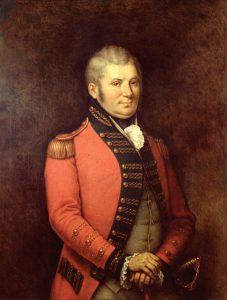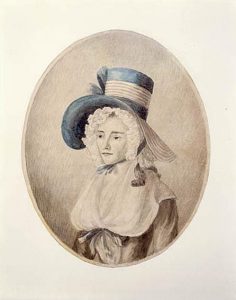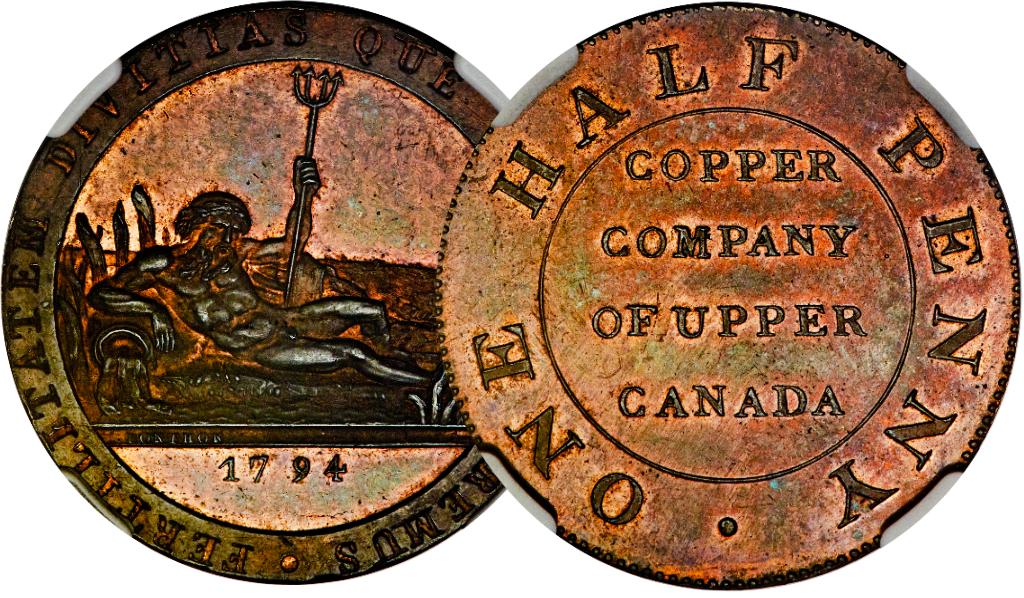On today’s date in 1793, the HMS Mississauga prepared to sail for present-day Toronto, where John Graves Simcoe would soon envision a future fort and settlement named York.
Simcoe was joined by his wife Elizabeth, who described the journey from Newark (present-day Niagara-on-the-Lake, Ont.) across Lake Ontario to Toronto in her diary. At this time, there was no town; Toronto was but a forest-covered bay, spilling out into a massive lake.
“Mon. 29th – We were prepared to sail for Toronto this morning, but the wind changed suddenly. We dined with the Chief Justice, and were recalled from a walk at nine o’clock this evening, as the wind had become fair. We embarked on board the ‘Mississauga,’ the band playing in the ship,” wrote Simcoe’s in July 1794.

Simcoe (shown in a circa 1881 portrait by French-Canadian painter George Théodore Berthon) sailed into Toronto with his wife Elizabeth on the morning of July 30, 1793, a day after preparing to leave from Niagara.
“It was dark, so I went to bed and slept until eight o’clock the next morning, when I found myself in the harbour of Toronto. We had gone under an easy sail all night, for as no person on board had ever been at Toronto, Mr. Bouchette was afraid to enter the harbour till daylight, when St. John Rousseau, an Indian trader who lives near, came in a boat to pilot us.”
UPPER CANADA HALF-PENNY
In 1794, soon after Simcoe assumed the office of governor of Upper Canada, he ordered half-penny tokens struck in both silver and copper by England’s Soho Mint.
A copper proof example (Breton 721) in Numismatic Guaranty Corporation Proof-65 Red and Brown realized $5,760 US (including buyer’s premium) as Lot 34170 of Heritage Auction’s January 2019 NYINC World Coins Signature Auction.
“Pattern pieces were prepared and sent to Canada in 1794 for approval,” reads the auction catalogue. “At that point, Simcoe forwarded the samples to the Home Office for approval. Home Office denied the proposal and instead arranged for a shipment of worn Tower halfpence from Ireland. So, Upper Canada got castoffs instead of a beautiful new coinage. The so-called ‘originals’ or approval samples for the proposed coinage have delicate digits in the date on the obverse, with the 17 and 94 separated by a wide gap, and on the reverse have Rs with straight tails and round Os. Fewer than 25 are believed to have survived.”
Last year, long-time U.S. numismatist Q. David Bowers, the co-founder of Stack’s Bowers auction house, began seeking information on the 1794 Upper Canada halfpenny for a book exploring mottos and inscriptions on money. The token includes an obverse inscription reading, “FERTILITATEM DIVITIAS QUE CIRCUMFERREMUS,” of which Bowers is pursuing the translation or meaning, he wrote in a July 31 blog post.

Simcoe’s wife (shown in a circa 1790 portrait by an unknown artist) detailed the journey from Niagara to Toronto in her diary.
1993 TRADE DOLLAR
In 1993, Simcoe was also featured on a $2 trade token issued by London, Ont.
That same year, he was also commemorated alongside his wife on a medal marking the 200th anniversary of York’s founding.
Simcoe remained in office until July 20, 1796, and died in England a decade later in 1806. He was buried in Wolford Chapel on the Simcoe family estate near Honiton, Devon.
His wife survived until 1850, when she died in Honiton, Devon, at age 87.

